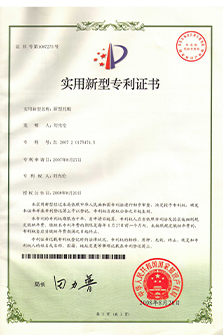 Afrikaans
Afrikaans  Albanian
Albanian  Amharic
Amharic  Arabic
Arabic  Armenian
Armenian  Azerbaijani
Azerbaijani  Basque
Basque  Belarusian
Belarusian  Bengali
Bengali  Bosnian
Bosnian  Bulgarian
Bulgarian  Catalan
Catalan  Cebuano
Cebuano  Corsican
Corsican  Croatian
Croatian  Czech
Czech  Danish
Danish  Dutch
Dutch  English
English  Esperanto
Esperanto  Estonian
Estonian  Finnish
Finnish  French
French  Frisian
Frisian  Galician
Galician  Georgian
Georgian  German
German  Greek
Greek  Gujarati
Gujarati  Haitian Creole
Haitian Creole  hausa
hausa  hawaiian
hawaiian  Hebrew
Hebrew  Hindi
Hindi  Miao
Miao  Hungarian
Hungarian  Icelandic
Icelandic  igbo
igbo  Indonesian
Indonesian  irish
irish  Italian
Italian  Japanese
Japanese  Javanese
Javanese  Kannada
Kannada  kazakh
kazakh  Khmer
Khmer  Rwandese
Rwandese  Korean
Korean  Kurdish
Kurdish  Kyrgyz
Kyrgyz  Lao
Lao  Latin
Latin  Latvian
Latvian  Lithuanian
Lithuanian  Luxembourgish
Luxembourgish  Macedonian
Macedonian  Malgashi
Malgashi  Malay
Malay  Malayalam
Malayalam  Maltese
Maltese  Maori
Maori  Marathi
Marathi  Mongolian
Mongolian  Myanmar
Myanmar  Nepali
Nepali  Norwegian
Norwegian  Norwegian
Norwegian  Occitan
Occitan  Pashto
Pashto  Persian
Persian  Polish
Polish  Portuguese
Portuguese  Punjabi
Punjabi  Romanian
Romanian  Russian
Russian  Samoan
Samoan  Scottish Gaelic
Scottish Gaelic  Serbian
Serbian  Sesotho
Sesotho  Shona
Shona  Sindhi
Sindhi  Sinhala
Sinhala  Slovak
Slovak  Slovenian
Slovenian  Somali
Somali  Spanish
Spanish  Sundanese
Sundanese  Swahili
Swahili  Swedish
Swedish  Tagalog
Tagalog  Tajik
Tajik  Tamil
Tamil  Tatar
Tatar  Telugu
Telugu  Thai
Thai  Turkish
Turkish  Turkmen
Turkmen  Ukrainian
Ukrainian  Urdu
Urdu  Uighur
Uighur  Uzbek
Uzbek  Vietnamese
Vietnamese  Welsh
Welsh  Bantu
Bantu  Yiddish
Yiddish  Yoruba
Yoruba  Zulu
Zulu non drive pulley
Understanding Non-Drive Pulleys Their Significance and Applications
Pulleys are an essential component in various mechanical systems, serving functions that range from simple lifting devices to complex machinery. Among the different types of pulleys, non-drive pulleys play a critical role in ensuring the efficiency and functionality of a system. This article delves into what non-drive pulleys are, their importance, and their various applications in everyday life and industrial processes.
What is a Non-Drive Pulley?
A non-drive pulley, as the name implies, does not transmit any power itself. Instead, it serves the purpose of guiding or redirecting a belt or cable in a mechanical system. Non-drive pulleys are often referred to as idler pulleys. Their primary function is to change the direction of force and ensure smooth movement without actually contributing to the system's power output.
These pulleys are commonly found in various systems that utilize belts, ropes, or cables to transfer motion. They can be fixed or movable and are used to support various forms of material while reducing friction and wear on different parts of machinery.
Importance of Non-Drive Pulleys
Non-drive pulleys are crucial for several reasons
1. Directing Force By changing the direction of the force exerted by a belt or cable, non-drive pulleys allow for more flexible designs in mechanical structures. This is especially useful in systems where space constraints prevent a straight-line arrangement.
2. Reducing Wear and Tear By guiding the belts smoothly through changes in direction, non-drive pulleys help minimize wear and prolong the lifespan of the belt or cable. This function is particularly important in high-load applications where the forces at play can lead to rapid degradation if not properly managed.
3. Tension Maintenance In many mechanical systems, maintaining the proper tension on a belt is essential for optimal performance. Non-drive pulleys help achieve this by providing a point of support that helps regulate the tension, preventing slippage and improving efficiency.
non drive pulley

4. Noise and Vibration Dampening Non-drive pulleys can also contribute to reducing noise and vibrations within a system. By allowing for smoother transitions and movements, these pulleys decrease the overall sound level and vibrations produced by machinery.
Applications of Non-Drive Pulleys
Non-drive pulleys are used in a wide variety of applications across different industries
1. Automotive Industry In vehicles, non-drive pulleys are often used in the engine compartment to manage the serpentine belt, which drives various accessories such as the alternator, water pump, and air conditioning compressor. These pulleys ensure that the system operates smoothly and efficiently.
2. Conveyor Systems In material handling systems, non-drive pulleys help guide conveyor belts along their paths. They play a critical role in directing the movement of materials, thereby facilitating efficient transport in warehouses and production lines.
3. Industrial Machinery Many machines, including milling machines and lathes, utilize non-drive pulleys to enhance their performance. By stringing belts through various pulleys, manufacturers can achieve the desired speeds and movements required for different machining tasks.
4. Elevators and Lifts Non-drive pulleys are also essential components in elevator systems where they guide the cables that lift and lower the elevator car. Their design must ensure safety and reliability as they bear substantial loads continually.
5. Bicycles and Fitness Equipment In cycling and fitness machinery, non-drive pulleys are frequently used to facilitate the smooth operation of gears and resistance mechanisms, improving performance and user experience.
Conclusion
Non-drive pulleys might seem like simple mechanical components, but their impact on the performance and longevity of various systems cannot be overstated. By understanding their function and applications, engineers and designers can develop more efficient, durable, and reliable machinery. As technology continues to evolve, the role of non-drive pulleys will undoubtedly remain significant in enhancing the efficacy of mechanical systems across industries.
-
Revolutionizing Conveyor Reliability with Advanced Rubber Lagging PulleysNewsJul.22,2025
-
Powering Precision and Durability with Expert Manufacturers of Conveyor ComponentsNewsJul.22,2025
-
Optimizing Conveyor Systems with Advanced Conveyor AccessoriesNewsJul.22,2025
-
Maximize Conveyor Efficiency with Quality Conveyor Idler PulleysNewsJul.22,2025
-
Future-Proof Your Conveyor System with High-Performance Polyurethane RollerNewsJul.22,2025
-
Driving Efficiency Forward with Quality Idlers and RollersNewsJul.22,2025





























